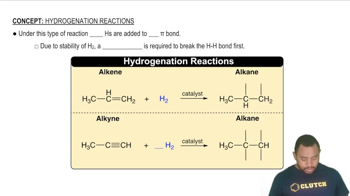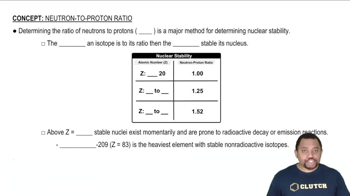Here are the essential concepts you must grasp in order to answer the question correctly.
Hydrogen Bonding
Hydrogen bonding is a type of intermolecular force that occurs when a hydrogen atom covalently bonded to a highly electronegative atom, such as oxygen or nitrogen, experiences an attraction to another electronegative atom. In the case of acetic acid, the hydrogen bonds between molecules lead to the formation of dimers, which significantly affects the concentration of monomers and dimers in solution.
Recommended video:
Equilibrium Constant (Kc)
The equilibrium constant (Kc) is a numerical value that expresses the ratio of the concentrations of products to reactants at equilibrium for a given reaction at a specific temperature. In this context, Kc indicates the extent to which acetic acid forms dimers in different solvents, with higher values suggesting a greater tendency to form dimers, as seen in benzene compared to water.
Recommended video:
Equilibrium Constant Expressions
Concentration and Ratio Calculations
Concentration refers to the amount of a substance in a given volume of solution, typically expressed in molarity (M). To calculate the ratio of dimers to monomers in a solution of acetic acid, one must use the equilibrium constant and the initial concentration to determine the concentrations of both species at equilibrium, allowing for the calculation of their ratio.
Recommended video:




